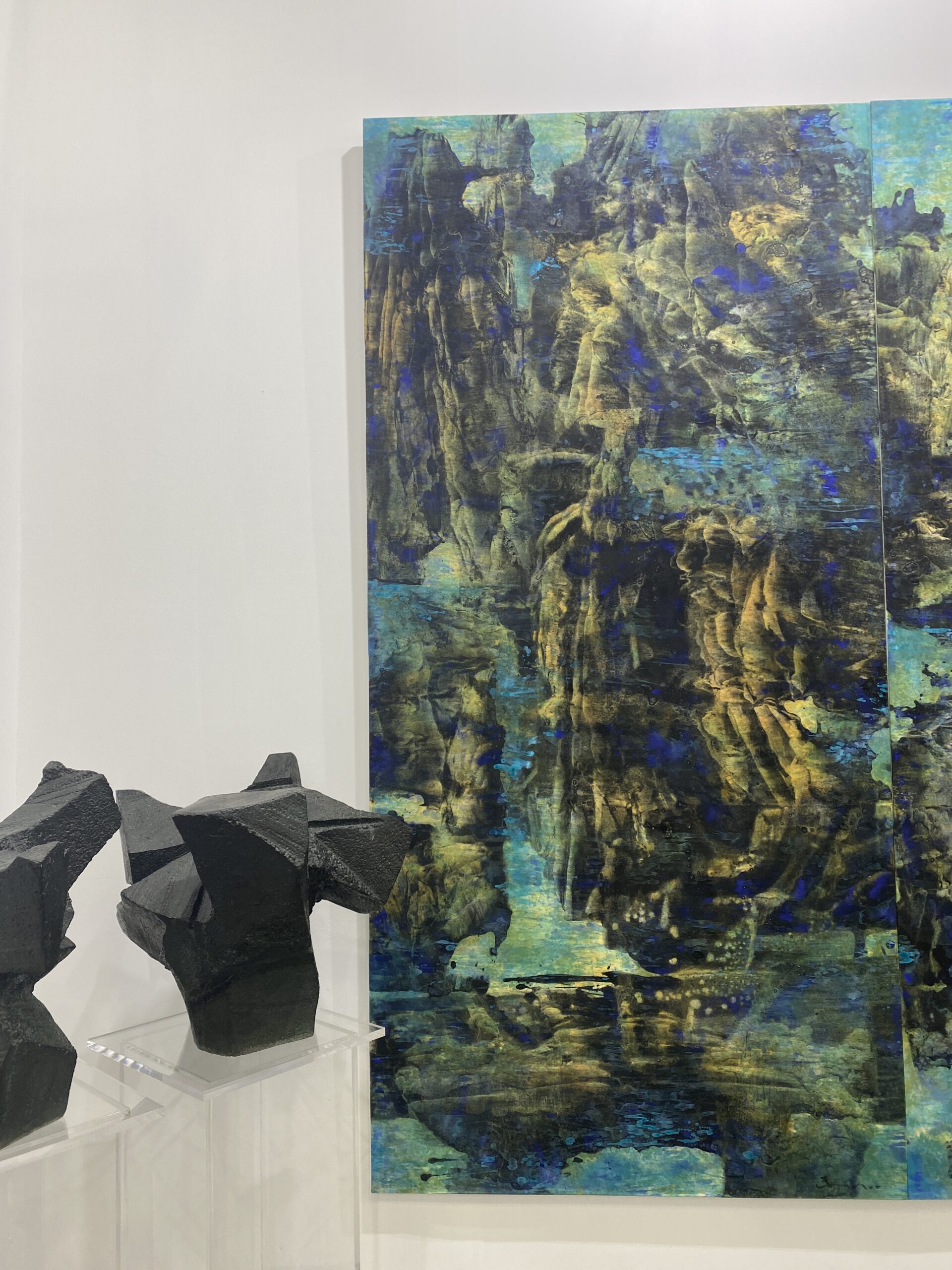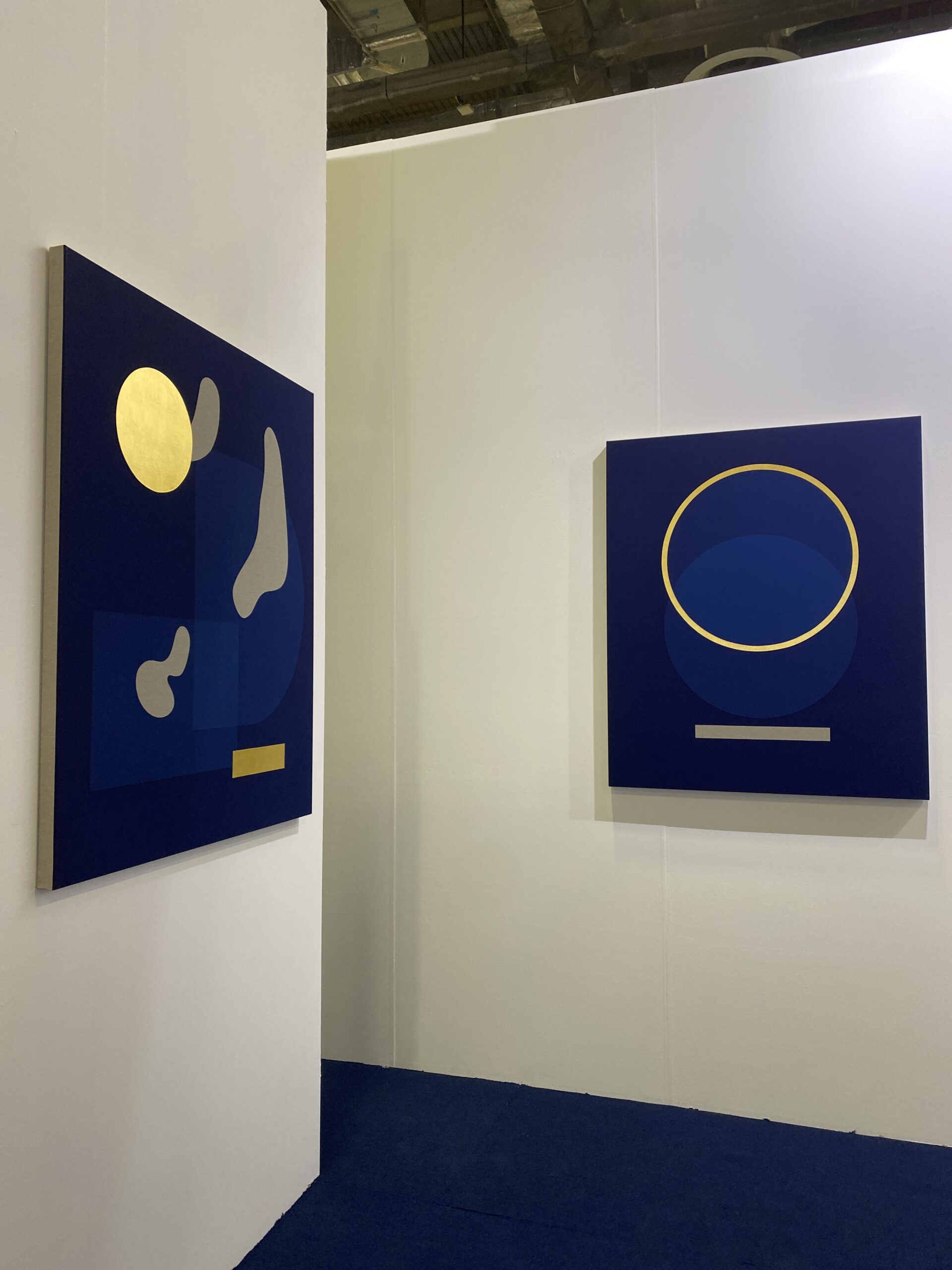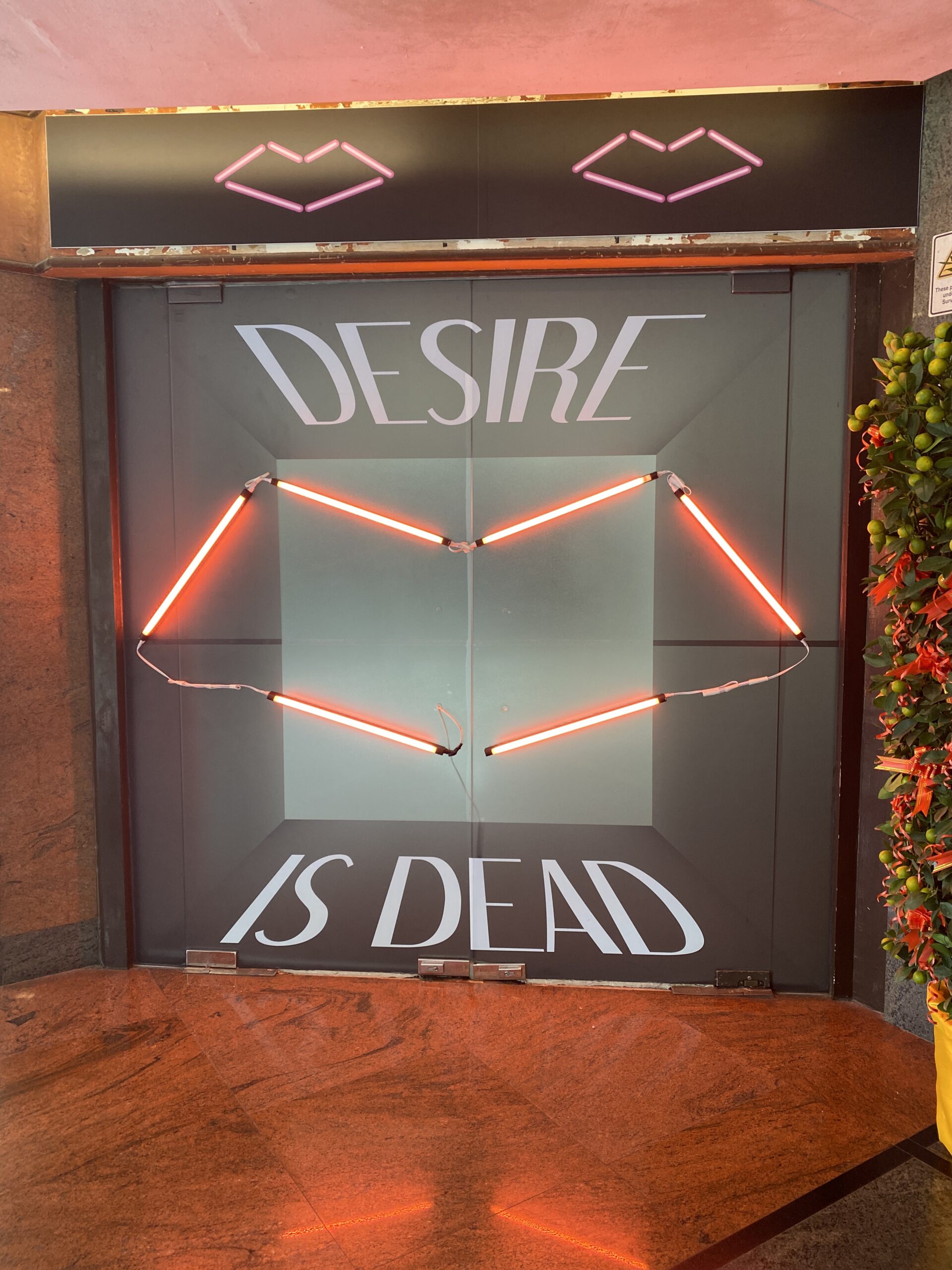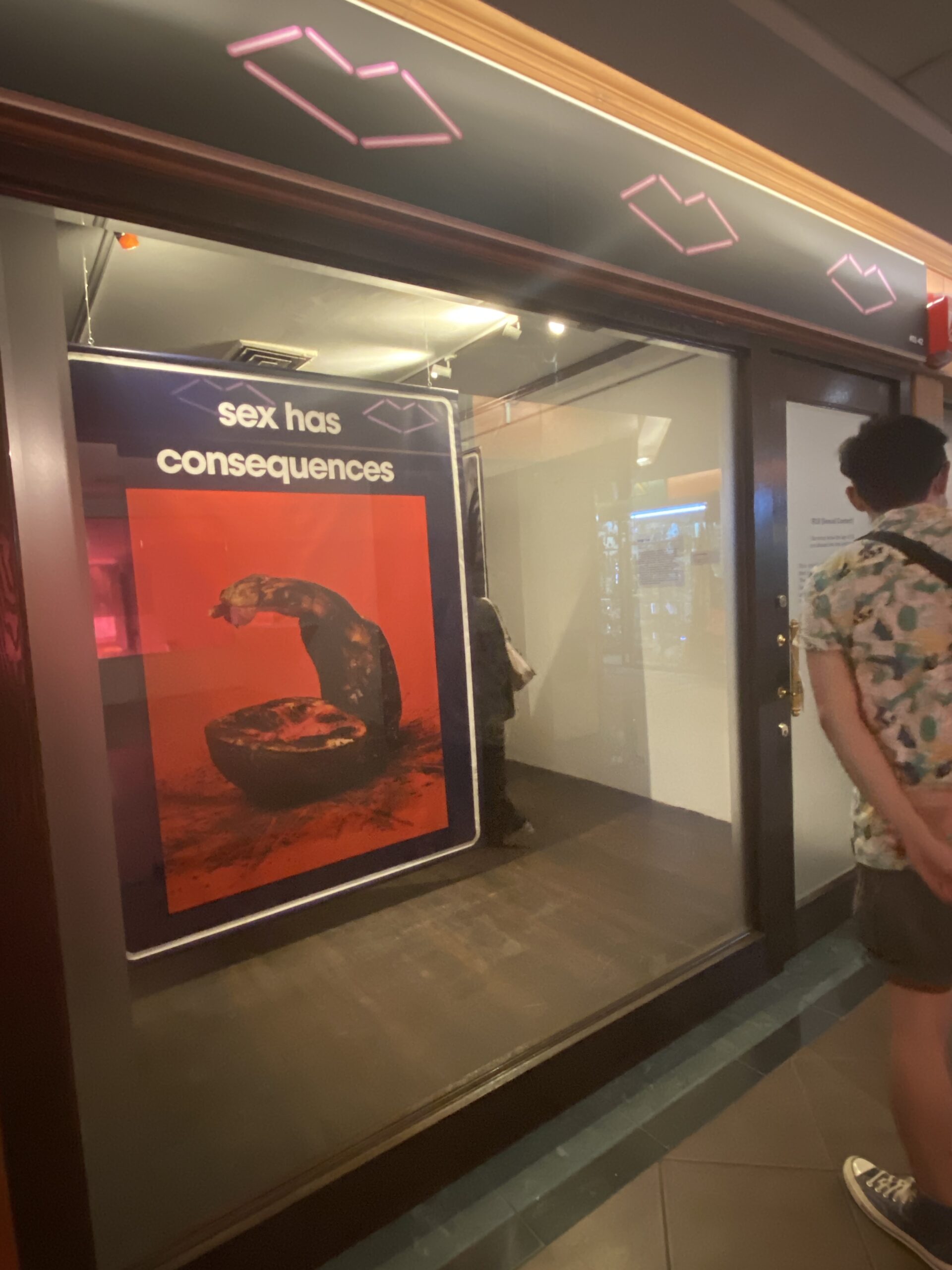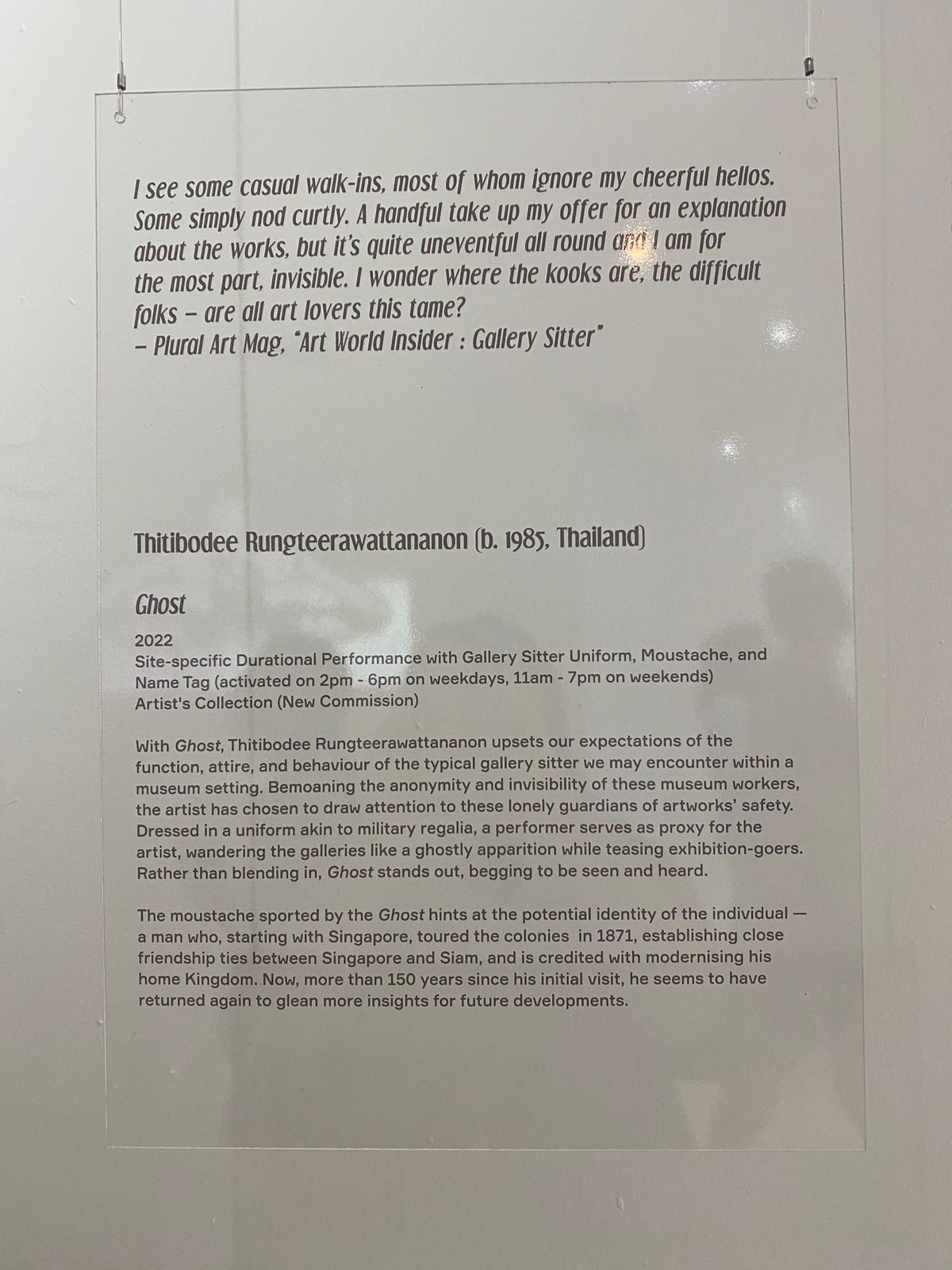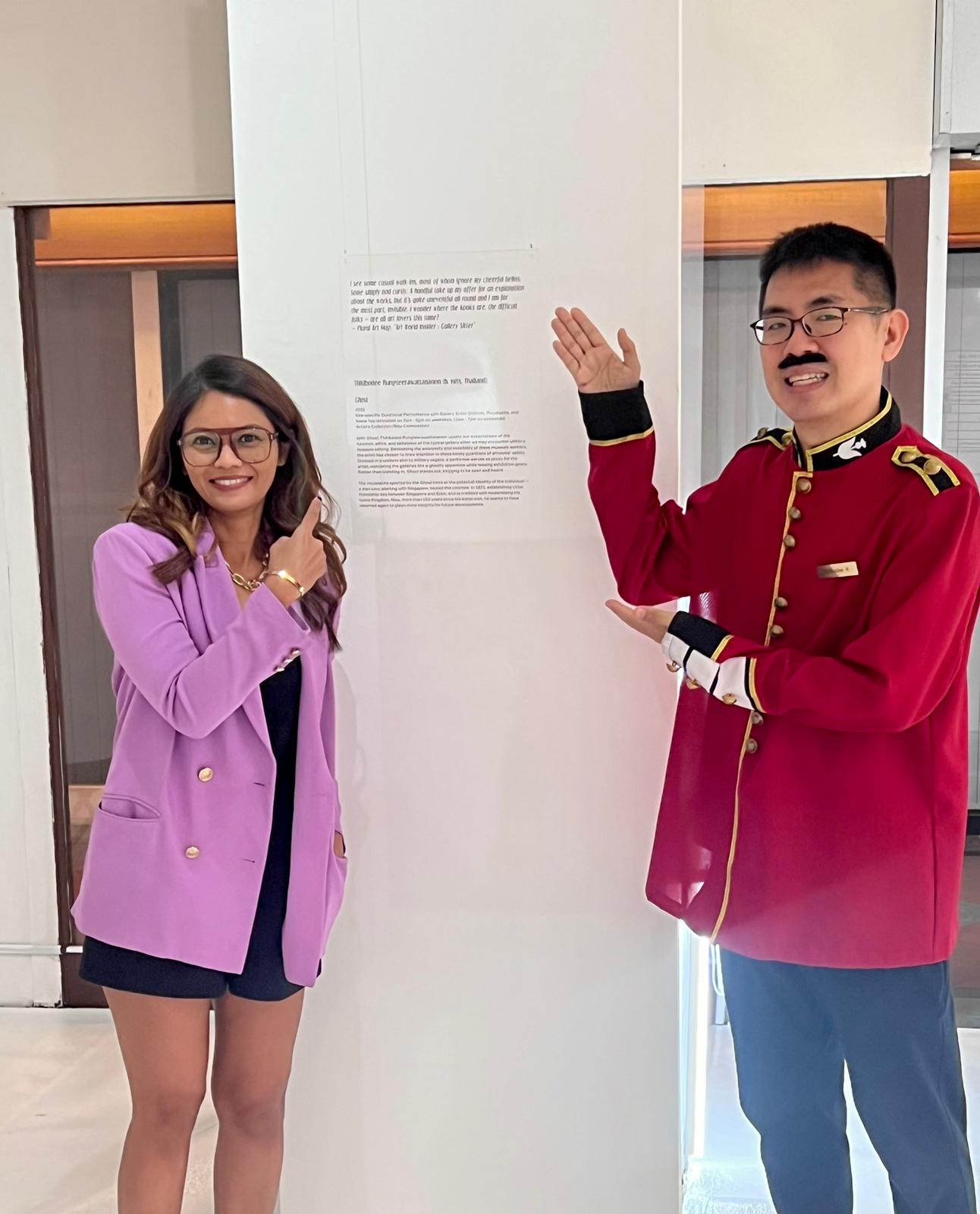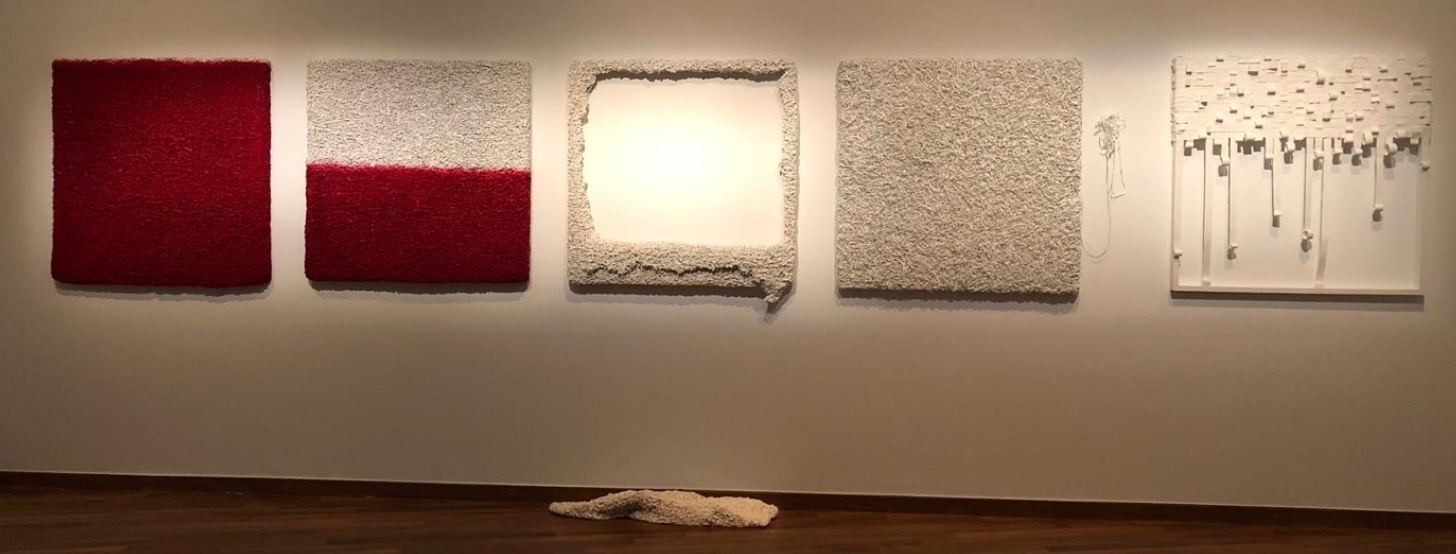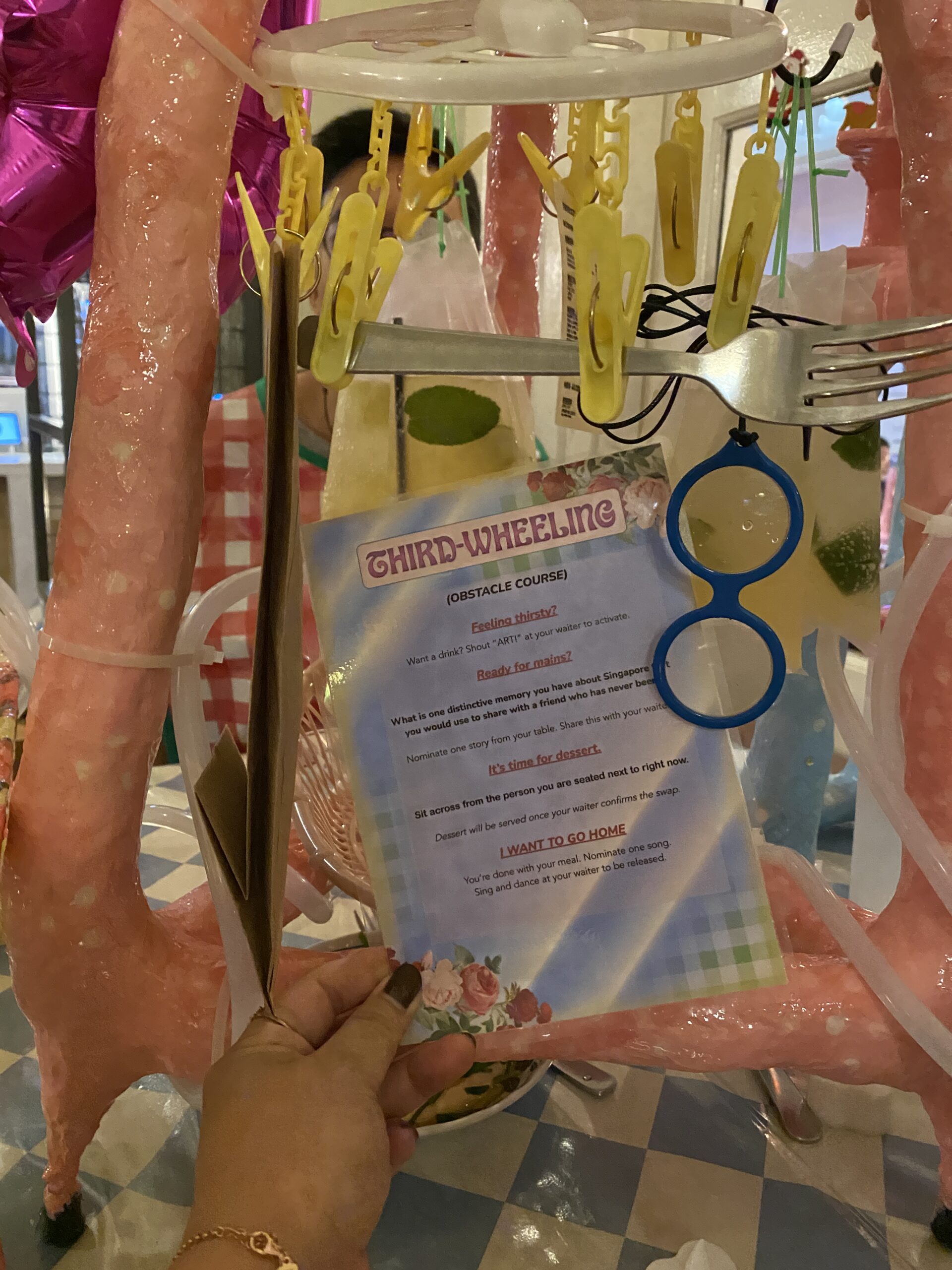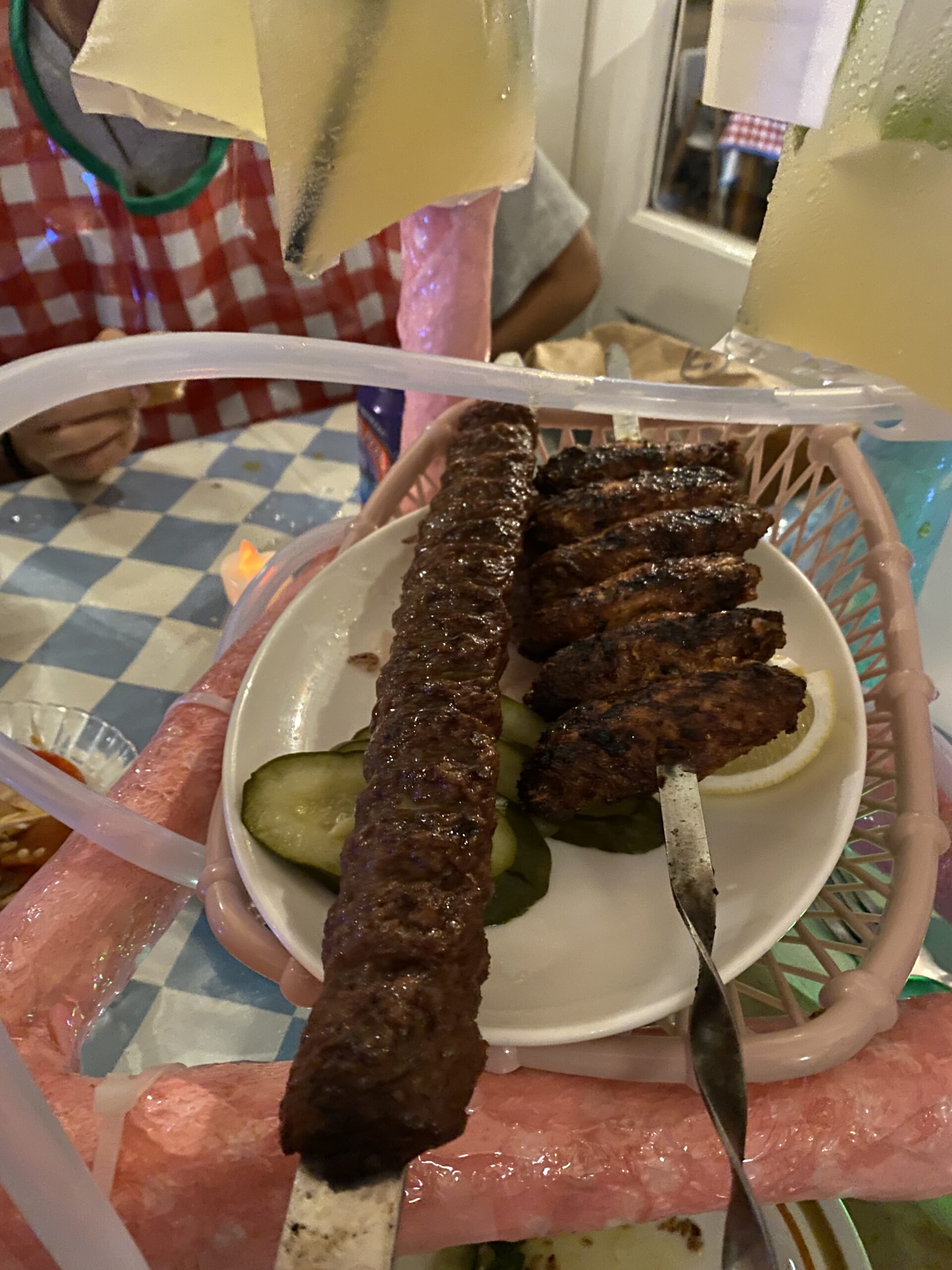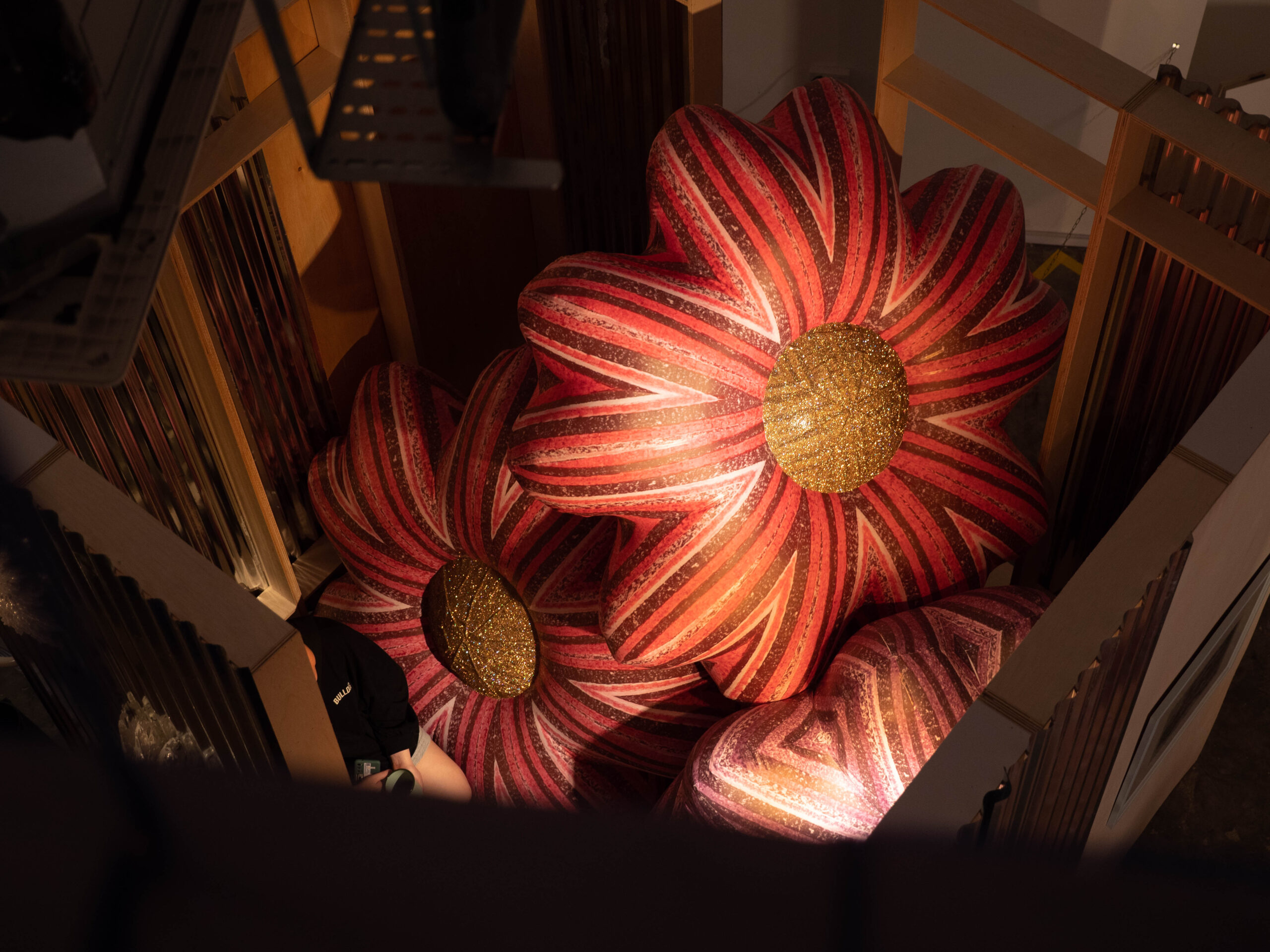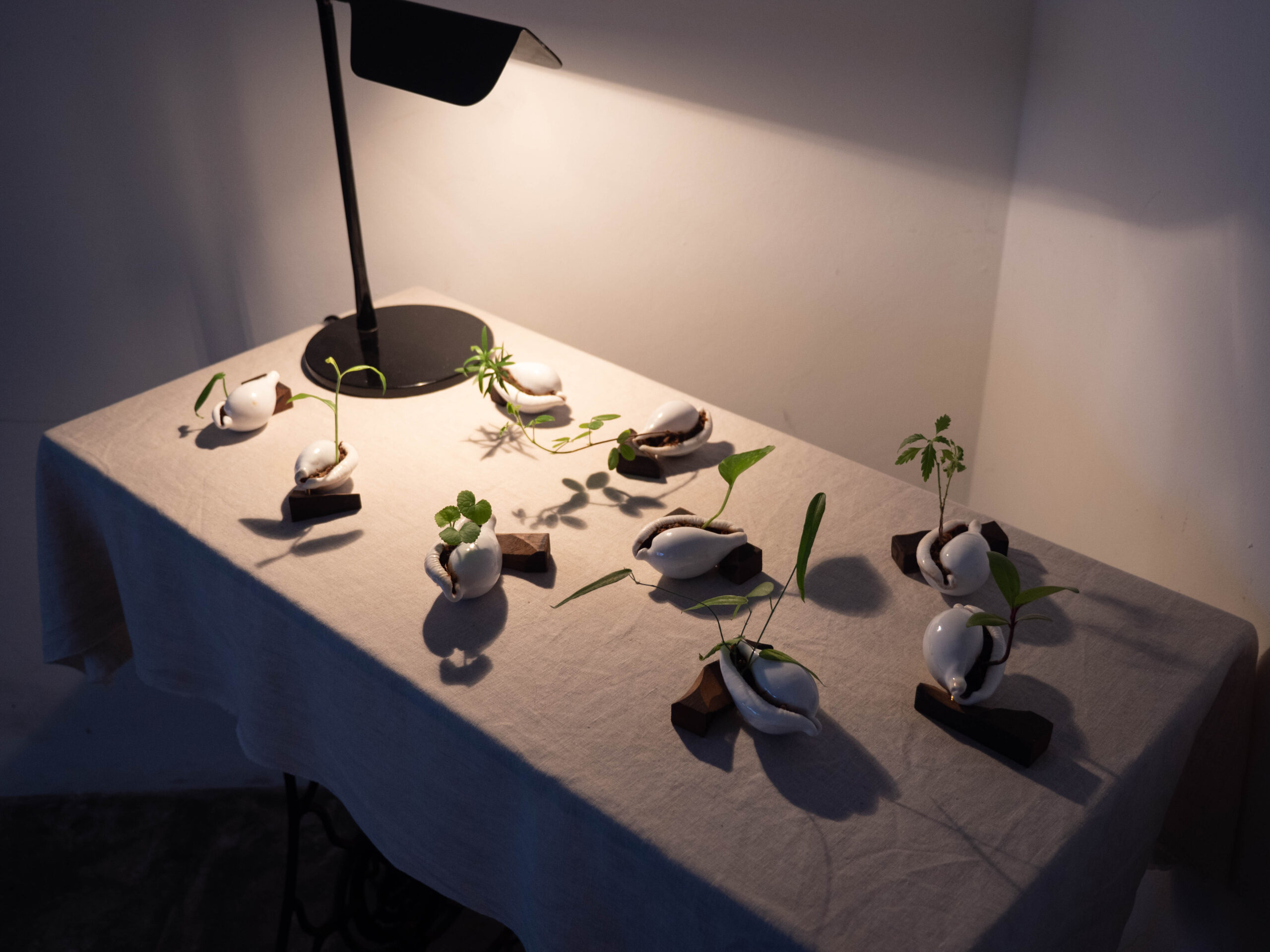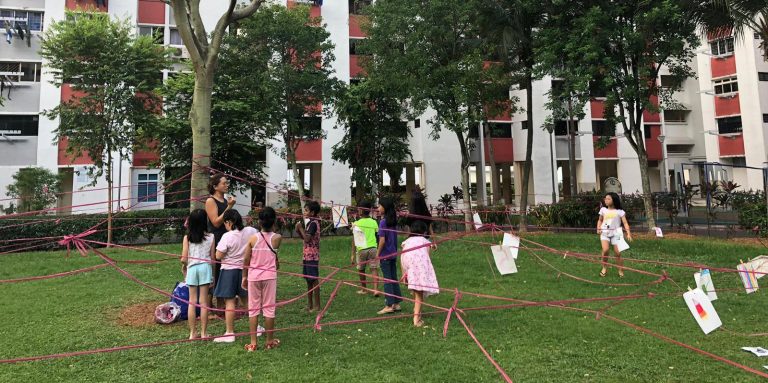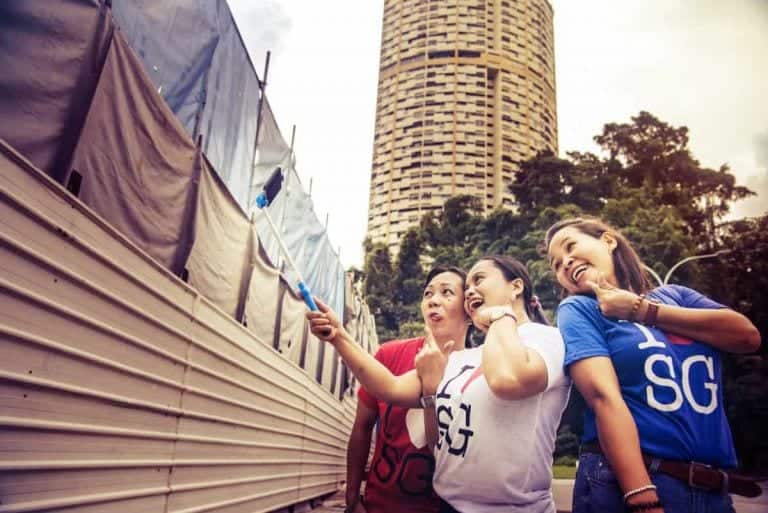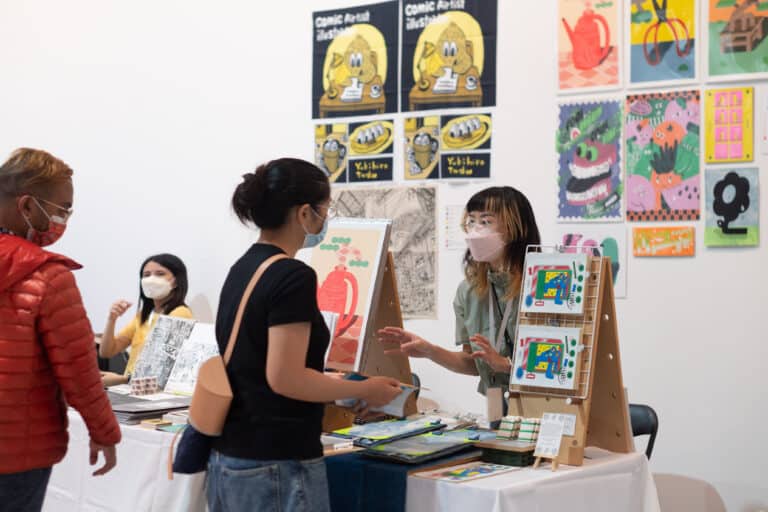What we loved
Usha: Well, this was the year in which everything sprang back to life, wasn’t it? COVID-19 seemed like it was well behind us, and ART SG was finally kicking off. We were all looking forward to the glitz of the Big Art Fair and ART SG did not disappoint. There were so many fancy events and interesting people that flew into town, it was tough to keep track of the whirlwind of activity.
There was a definite vibe, a buzz in the air, and a sense of excitement that we had all been missing for a while. I loved how the stats flew fast and furious, with ART SG issuing its first summary on sales mere hours after the event’s vernissage. It really spoke to the anecdotes we often hear from gallerists about how most major art fair sales take place in private previews, well before the public openings.
The initial list of sales was impressive in terms of numbers, notably Museum MACAN in Jakarta was willing to be publicly acknowledged as a purchaser of two Ashley Bickerton works Seascape: Floating Ocean Chunk No. 1 and 7°04’48.6″N 171°41’59.7″E.
Steph: I can’t not talk about how much I enjoyed ART SG either. The sheer breadth of works on display and the opportunity to check out presentations from artists and galleries from various career stages sent a rush of adrenaline through me. Don’t even get me started on the thrill of beautiful new works catching my eye and stopping to enter a booth because I simply had to get a closer look. To me, what was really valuable was the opportunity to learn about new artists and galleries that I had never heard of before.
On another note, the premises of OH Open House – Museum is Dead and Desire is Dead really fascinated me! I found the discussion on the relevance of institutions and top-down structures in today’s digital, and arguably more democratic, age to be both timely and tongue-in-cheek. I also loved how Adele Tan, the curator of Desire is Dead, tackled the topic, as it was intertwined with notions of female desire, community, power, intimacy, sex and sex education. Set in Tanglin Shopping Centre, I was also pretty pleased that visiting the show gave me an excuse to tuck into sandwiches at the old-school Steeples Deli nearby…
Usha: Totally agree that Open House nailed it! I loved how this year’s show managed to address both the hyper-capitalism of the art world and the different kinds of desires that refute the “received perception of Singapore as unsexy and sterile.” (Read the full review by Bakchormeeboy here.) And of course, who can forget the human artwork accompanied by a pullout quote from this very magazine: Thank you Open House!
Personally, I was really moved. We started this magazine to write about things we loved in local and regional art. This was (and still is) such a passion project. To see our own words reflected back in an artwork that’s so rich in meaning, at an exhibition organised by a community of art people who we respect and admire…well, it was overwhelming.
I also really loved the two separate presentations by Gajah Gallery and Primz Gallery on the work of artist Jane Lee. The former, Neti Neti, was a commercial gallery show featuring works made by Lee in the Yogya Art Lab (YAL), a space that’s fast gaining a reputation for being one of the more experimental and exciting artist playgrounds in the region.
As Gajah explained, “Lee’s works created at YAL assume the physicality of sculpture while maintaining the illusory depth of the painted image…(paintings were transformed) into highly tactile, three-dimensional pieces.”
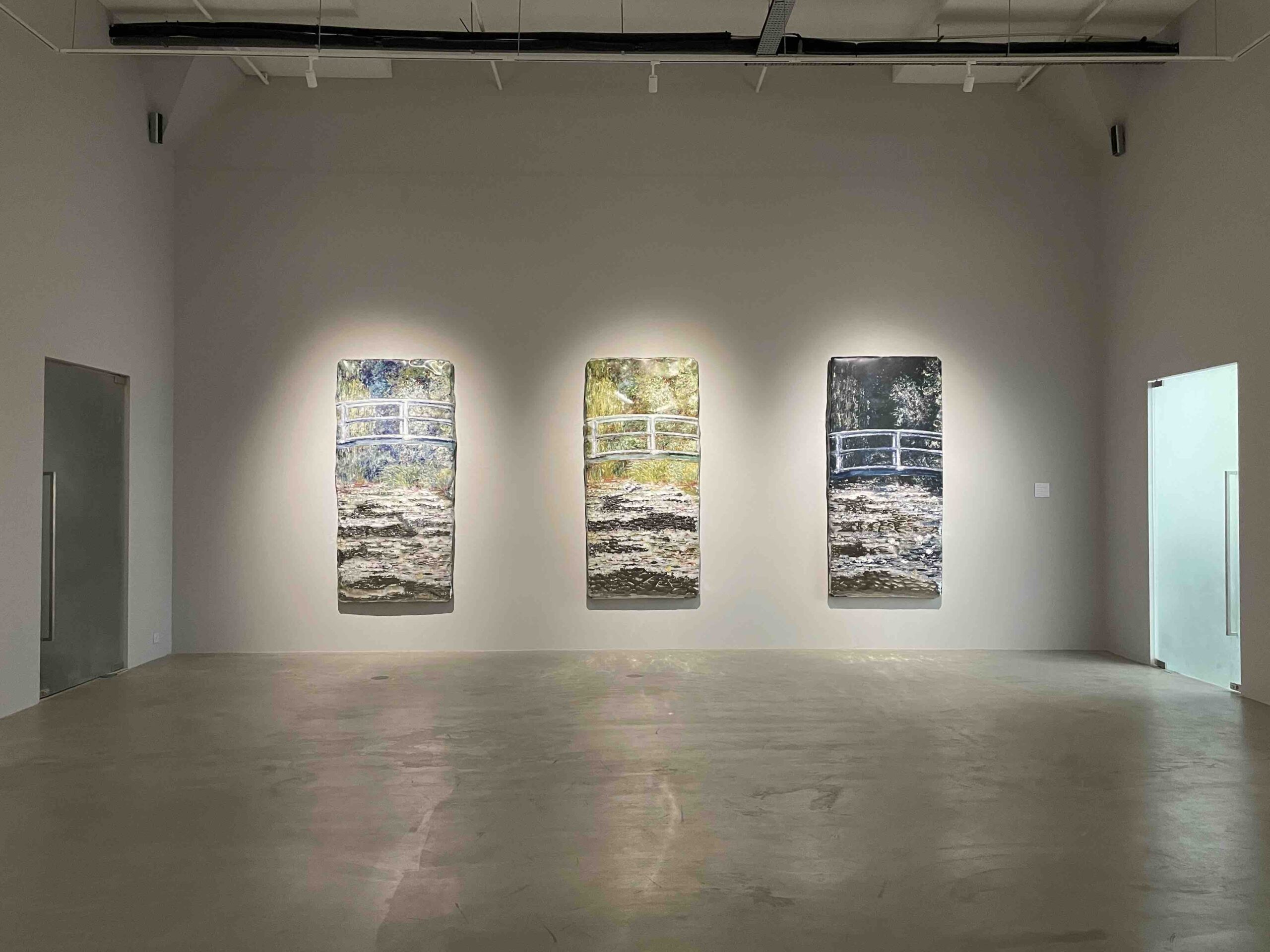
Over at Primz, visitors were treated to To Begin Again, a private presentation of Lee’s earlier works by prominent collector couple Albert Lim and Linda Neo.
The two shows provided art lovers with a rare chance to see the ‘life cycle of an artwork,’ as it were – what pieces might look and feel like in a show focused on commercial sales, versus how a private collector might choose to engage with the works once acquired, based on their own personal tastes and preferences. They also showed the evolution of the artist’s practice over time, in a manner that was arguably less structured and more free-flowing than say, a single institutional retrospective. Might this prompt or inspire other collectors — and we all know how notoriously private local collectors can be — to mount their own showcases? I certainly hope so.
Sheryl: What I really enjoyed about Singapore Art Week (SAW) this year was the return — in full force — to live performances. These ephemeral happenings made a good counterpoint to the big fair in town and the hypercapitalism of the art world that you’ve pointed out, Usha.
Over at the National Gallery Singapore, I was moved by visual artist and musician Anise’s joint performance with movement artist Sonia Kwek for the Light to Night Festival. Between cavernous harmonies and crystalline vocals, gestural contortions and fluid, energetic sweeps of movement, the duo created an atmosphere charged with visceral potency. Anise and Sonia had worked together on a hybrid virtual art exhibition and EP release for last year’s Singapore International Festival of Arts (SIFA), and it was amazing seeing the fruits of their collaboration in real time and space.
The Islands Time-Based Arts Festival (ITBA), which Team Plural had billed as one of our top events for SAW 2023, didn’t disappoint either. In particular, ila’s Masa, Masalah (Time Problem) spoke to me in ways I didn’t think possible, opening my eyes to what performance art, at its best, could be. As artist ila moved with aching grace beneath the diaphanous folds of a silky black cloth, I could almost feel my body as if it were hers — vulnerable, pulsing, groping, writhing.
Against the low, electronic hum of a heartbeat-like rhythm, ila’s morphing textile form brought to mind sculptures of the veiled Madonna, evoking the terror and the beauty of living in a mortal body.
Coming back to live performances — to spaces shared not just with artists but also with audiences equally eager and receptive — felt incredibly precious. This year, I appreciated the renewed attention to programming and to creating collective experiences beyond staging static exhibitions.
There’s something about holding space, together with other living, breathing bodies, that just brings a different kind of resonance to art. It reminds me of something Marla Bendini shared during her guzheng and voice improvisation at ITBA:
“We make things holy by the kind of attention we give to them.”
Isn’t that beautiful?
Usha: Absolutely, I totally agree about the performances. XUE’s performance at Starch for Nighthawks was a particular highlight for me. The energy was palpable and the way their body moved in the semi-darkness was completely mesmerising. It made me regret missing their previous performances at Yeo Workshop and The Glass Hut.
I also loved the tie-ups with food this year — it’s almost a no-brainer, right? Singapore’s already on the map as a foodie destination, why not leverage that to buoy our contemporary art scene? Steph and Sheryl, how did you two rate Awkward Party?
Steph & Sheryl:
Steph: As an introvert, I have to say that I enjoyed Awkward Party way more than I thought I would! Sheryl and I were seated together, which made me feel a bit more comfortable about dining with two other strangers.
The food was exquisite; I’ve been wanting to try Artichoke for years. But the twist that had us work for our food was fun. For example, we were supposed to share stories about Singapore with our waiter within a certain time limit to get our mains but we became so engrossed in speaking to each other that we lost track! (Thankfully, we were still served the dishes; the warm cauliflower salad was my fave.)
Overall, I had a merry time because the other strangers that sat with us were really open to the experience, and it was heartening to see people from different backgrounds interested in SAW events like this. It was a good opportunity to make new friends too — we all followed each other on IG by the end of the night!
Sheryl: I’m no culinary expert like you Steph, but the food was definitely delicious! And with old-school chequered bibs and neon-yellow food stands decoupaged with sickly sweet flowers, Awkward Party fully delivered on their signature kitschy-campy aesthetic. The only concern for me was the price point ($70), and I wonder if Awkward Party might have plans for more accessible experiences.
That being said, the collaboration with Artichoke, which is right next to Objectifs, was a smart move. One thing I appreciated about SAW was how events were clustered by district, especially for places that were a little harder to get to.
Speaking of Objectifs, if you didn’t manage to catch Bad Clocks: Alley Through a Pinhole during SAW, I’d recommend a visit before the show closes on 5 February. Staged by multidisciplinary collective DASSAD (Woong Soak Teng, Adar Ng, and Dave Lim) with Victoria Hertel, Neo Jialing, and Euginia Tan, Bad Clocks invites audiences to meditate on the passage of time by stepping into a darkened room-turned-camera obscura.
I also found respite in watching an inverted, dimmed image of the busy road between the gallery and Fortune Centre. Lim’s documentary-styled reflections on egg-cooking opened up a quiet space for contemplating the rhythms of everyday life, as did Hertel’s interactive installation, which consisted of differently-pitched metronome bell mechanisms suspended in a circle. Realising that the bells were connected to motion sensors, I soon found myself circumambulating the installation, like the hands of a clock.
Another photography-based highlight for me was Pictures in the Mind. The show was a part of DECK’s long-term exploration of Peace Centre, a tranquil old mall which is slated for en-bloc redevelopment towards the end of 2023. Apart from the information centre where you can find an AI-powered photo booth, books, and a heritage showcase, the rest of the works are nestled inconspicuously around the mall.
For a site-specific exhibition that’s all about mining the memories of the space, Pictures in the Mind was incredibly effective. Much of the fun was in searching for the artworks (the downloadable PDF map and the large artwork labels helped a lot), and trying to figure out what was and wasn’t a work of art.
One work that stood out to me was Ang Song Nian’s Exterrnal Receptacles and Signals. For this installation, the artist replaced a series of miscellaneous collectables in an optical shop with palm-sized photographs of them. The best part of experiencing this work was chatting with the lady boss, who happily shared how she’d acquired the objects (as travel souvenirs or gifts from loyal customers) over the last forty years of shopkeeping.
What we didn’t like so much
Steph: Not having enough days to cover everything! While it was necessary to speed through numerous openings, media previews, and events to check out everything I wanted, I felt it was a shame that there was truly no time to simply soak in the artworks and give them the close reading they deserved. I also loved stopping to speak to artists, gallery owners, and journalists alike, but again, the time constraints and overwhelming FOMO that hung over our heads meant that many of us couldn’t really stop to indulge in deeper conversations.
Sheryl: I have to agree with you, Steph! SAW feels like a mad rush every year. I felt torn choosing between events — especially with the sprawling (it felt that way after not having an international art fair in Singapore for so long!) ART SG.
On the one hand, it was a rare chance for those of us who aren’t regular jet-setting art collectors to be exposed to many big-name international artists. But on the other, as I stared at a pair of Jeff Koons sneakers hanging on the wall and imagined its infuriating price tag, I couldn’t help wondering if my time could have been better spent supporting local artists.
It was dislocating, moving between the art that makes rounds on international circuits (ART SG, S.E.A. Focus, the homecoming Singapore showcase of the Venice Biennale), and the more experimental, smaller-scale ground-up projects that our own artists have been putting up with limited resources. Do all these players jostle for our attention on equal ground?
I don’t believe that hard lines can be drawn between the global and the local, or the commercial and the experimental. However, I find myself more inclined towards tentative works-in-progress, rather than to the glitz and glamour of the cult objects designed to “put Singapore on the world stage”.
Of course, this is a personal opinion rather than a value judgement. Certainly, we can’t do without one or the other; it’s always a balancing act when it comes to seeing so much in a very short week!
Usha: When COVID hit, we were forced to look inwards and there was a definite shift towards the nurturing and development of the local art scene. (What else were we supposed to do anyway?) With the return of tourism and travel, it seems that we have flipped the switch back to profiling ourselves on an international level.
Almost every major event saw reference being made to the rest of the SAW calendar, in a kind of frenzied reminder to all visitors that so much was going on. It’s an admirable goal, but I do miss the intimacy and meaningful connections made when we had no choice but to take a deep dive into Singapore art.
While I loved the glamour of the big art fair, I didn’t miss the restrictions to access that often accompany these kinds of events. Unfriendly folks who ask snippily if you’re “on the list,” galleries that look you up and down before deciding if you’re worth their time, finding out about super exclusive — and expensive — parties and events that you haven’t been invited to, and uncomfortable small talk…. Yup, I didn’t miss all that! (Or perhaps I’m just bitter because I wasn’t on those ultra-exclusive lists!)
I also really disliked the aggressive surveys that were taken at some of these events. Not saying that every person I met was like this, but I did feel like this edition of SAW had more than its fair share of pushy folks at the end of events, rushing to get very long feedback forms filled out on the visitor experience.
In one instance, I was badgered at an exhibition before I was even done looking at the art. I totally understand how everyone is just doing their job and that feedback can only help things improve. But when the statistic-gathering exercise gets in the way of actual art appreciation and enjoyment, it all seems rather counterproductive.
What we’d like to see at SAW 2024 (if anyone’s listening)
Sheryl: Considering that many of us have day jobs, I’d love to see more events extending their operating hours for SAW 2024. Gillman Barracks did a good job with this, though I heard that food and drink were missing from Art After Dark this year. I think bringing in (reasonably priced) refreshments everywhere is a surefire strategy to draw in audiences.
If extended hours aren’t possible because there aren’t enough gallery-sitters to go around, staggered hours might be another solution. In this respect, I thought starch and Supper House’s after/party was ingenious. Time and space take on a wholly different texture and density as night falls, and the showcases comprising the “party” were designed specifically to be experienced from 7pm onwards.
Nighthawks (an exhibition with performance “activations” curated by Jeremy Sharma) and Late Night Bookstore at starch, and There are Flowers in the Morning Mist at Supper House evocatively re-created liminal spaces for spontaneous encounters under the cover of night.
Usha: For once, I’d love to see a SAW that isn’t so jam-packed? Year in and year out, arts workers don’t get a breather over the holiday period and it’s hell getting responses for ongoing projects in December when everyone takes their vacations.
While I do understand the need for us to occupy a space in the regional and international art calendar that doesn’t clash with anything else, it’s important to balance this against the development of a truly sustainable industry that doesn’t face complete burnout at the start of every calendar year.
This year, we had something like over 130 art events in a fortnight, on the basis that there would be something for everyone. (From the latest press release, there were “over 180 programmes and exhibitions, presented by more than 1000 artists and curators from Singapore and across the globe” — did 50 or so events spring up while SAW was actually ongoing? I would not be surprised if they did, given the pace that everyone was working at!)
Has this strategy worked? It would be great if the National Arts Council could share a bit more about its vision and how the arts community has responded to it. So far, from anecdotes, it just feels like everyone is tired. The same questions seem to arise every year — should we be spreading out events more and hosting an Art Month instead of an Art Week? Should we just whittle down Art Week (or fortnight as it were) to a key handful of important showcases – big and small?
Steph: Echoing what Usha and many, many others in the scene have said, I’d love to see SAW run for longer! I have loads of friends who want to learn more about the local arts scene but have regular nine-to-five weekday jobs. That leaves them two weekends at most to catch the events. I imagine there are many others in this position, who might not be able to catch everything they want to in a mere two days!
And while I’m sympathetic to the fact that the logistics of SAW shows are difficult to juggle, it seems like a waste that the events don’t run for much longer when artists put so much effort into conceptualising and executing them.


